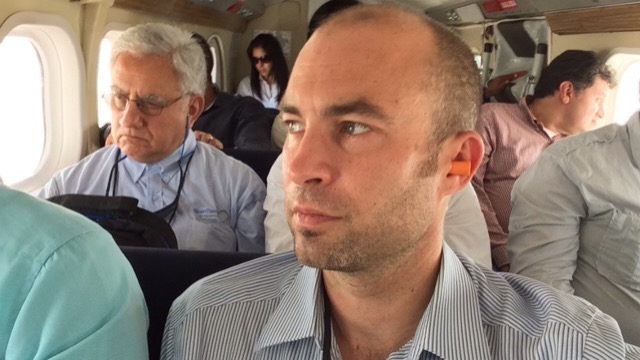Extractive Industries Turn to Technical Innovation to Manage Risk and Compliance
Awareness and concern over human impacts to the environment has reached acute levels. Major energy, mining, infrastructure and other industrial projects are stopped over concerns over their impact on ecosystems, risk of contamination and accidents on human health, effect on the fabric of indigenous communities, human rights, and carbon footprint to name but some. Such is the public sensitivity that even governments win and lose power over decisions relating to such developments in some jurisdictions.
Our concerns over resource sector impacts, don’t change the fact that every physical thing we use or consume must either be grown or mined. Civilization itself has been characterized by the raw material building blocks fundamental to its development; the stone age, the bronze age, the iron age. Stone and metals build our cities, provide our infrastructure, remove our sewage, make up our phones and computers, hospitals, and fill our teeth. Even clean technologies like solar, wind and hydro, are constructed with and require the conductivity of metals to generate the energy that powers us.
Legislatures and regulators continue have and continue to enact requirements for industries aimed at managing and reducing their risks and impacts. Often times companies go beyond compliance and adopt voluntary standards. In all cases the complexity of actions data and new science to manage is daunting.
To meet this existential challenge, human industry is doing what it always has; innovate. Technology platforms have emerged that track critical information and present them in ways that enable the environmental social and governance (ESG) factors of a business to be measured, managed and targeted for incremental improvement. Organizations must continually track compliance requirements across local, regional and national legislation as well as all the permits, licenses, approvals and other documents required to gain and maintain licenses to operate. The consequence for failure can result in a catastrophic impact to business continuity.
Market innovators in this space include IsoMetrix (external link) , Borealis (external link) , and M-Risk (external link) . They offer a number of module solutions for differing client’s needs, including to name a few Environmental Sustainability, Health and Safety, Compliance Management, and Carbon Footprint Management. All modules can be seamlessly linked to a user-friendly visually-pleasing master control dashboard. So, what does this legal and risk innovative technology look like?
Using IsoMetrix’ Compliance and Carbon Footprint management solutions as an example, their platforms allow a company to upload or integrate all obligation sources and obligations across all Acts, Regulations, Permits, Approvals, Licenses, and any other obligation source into a core compliance library. Obligations can then be assigned to the relevant areas of a department or in the business at any location or level. Once obligations have been assigned, they can then be managed with recurring actions and prioritized based on risk and consequence. The Carbon footprint solution allows a company to systematically track its move towards low carbon operations starting with the identification of sources and quantification of the associated emissions. Different units of measure are captured, converted and displayed in a number of ways to meet the company’s management and reporting needs. The solution enables inputs such as emission factors, units and formula, to gauge the effectiveness of energy efficiency measures, carbon substitution and emerging carbon capture technologies. This makes it an easily auditable system which can be updated at any time to drive greener performance.
Without losing vigilance we can take some solace that the technology exists to control and monitor risks, maintain compliance, and help industry move towards more sustainable operations. A combination of behavioural change, adaptation and innovation will allow us to assure a safer, healthier environment and modern human living standards. ESG management, risk and compliance technology are part of the solution for assuring business continuity and a better future for all.

The LIZ is partnering with students from Toronto Metropolitan University's Lincoln Alexander School of Law to explore current legal tech and innovation ideas and trends.
This article was written by law student, Adam McEniry, MBA, & J.D. Candidate. Adam has held senior sustainability and stakeholder management roles in industry and is currently completing a law degree at the Lincoln Alexander School of Law (Year 2). You can find out more information about Adam via LinkedIn (external link) , Instagram (external link) and his website (external link) .